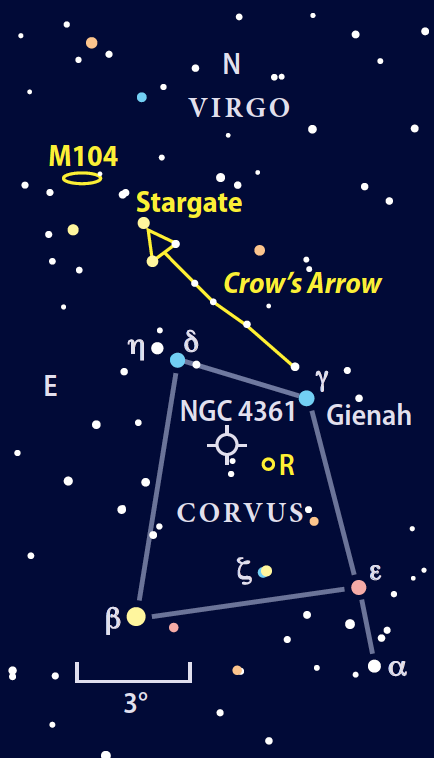Key Takeaways:
The Realm also contains many stragglers scattered around its central core. This month, we head toward the Realm’s southern extreme, to meet one of its brightest and most photogenic members: M104, the famous Sombrero Galaxy.
The nickname comes from the broad lane of dark nebulosity that slices along the rim of this edge-on spiral galaxy. The appearance, strongly reminiscent of the broad-brimmed hat, makes this a unique sight among the tens of thousands of galaxies that populate spring’s night sky.
Many years later, another French astronomer, Camille Flammarion, stumbled upon Messier’s personal copy of his catalog while browsing through a bookstore. After perusing his incredible find, Flammarion thought it fitting to add M104 to the list in 1921, the first of six posthumous additions to the Messier catalog.
At a projected distance of 65 million light-years, M104 is on the far side of the Realm from our vantage point. Even at this vast distance, it still shines at 8th magnitude. That’s within the reach of 7×35 binoculars — you just have to know where to look.
The easiest way to find M104 is to follow the arrow. Aim toward the star Gienah (Gamma [γ] Corvi), marking the northwestern corner of the trapezoidal body of neighboring Corvus the Crow. Just to its north-northeast is HD 106819, the first in a line of three 6th- and 7th-magnitude stars extending to the northeast. Add to them three more stars set in a triangle at the opposite end of the line, and you have the Crow’s Arrow asterism.
I am sure that over the course of time, many observers have unexpectedly “discovered” this curious pattern on the way to M104 and claimed it as their own. It is formally cataloged as STF 1659 in the double star catalog published in 1827 by its discoverer, Friedrich Georg Wilhelm von Struve. Most, however, prefer various nicknames, such as a Delta-Wing Starship. To me, Texas amateur John Wagoner gave it its best name, the Stargate, in reference to portals in space featured in the 1979–1981 television series Buck Rogers in the 25th Century.
M104 lies just to the northeast of the Stargate in the same field of view. My 10x50s disclose a tiny, oval glow that extends east to west, while my 16x70s add a hint of the Sombrero’s signature brim of dark nebulosity. Due to M104’s southerly declination, however, trees, clouds, and light pollution may hamper your seeing it. If that’s the case, wait until it culminates and give it another go.
Finally, head back down the Crow’s Arrow to the star Gienah. Centering Gienah in the field, glance just 2° to its southeast. There, you should see two closely set 8th-magnitude stars. If you also see a reddish star to their west, forming a tiny triangle, then you’re seeing the long-period variable star R Corvi. Over a period of 317 days, R Corvi fluctuates from a maximum brightness of magnitude 6.7 to a minimum of magnitude 14.4. With the next maximum expected around the Fourth of July, this is the perfect time to monitor R Corvi whenever you head out to enjoy the sky. By doing so, you’ll see it slowly grow brighter as spring becomes summer, and then begin to fade through late July and August.
I’m sure every reader has a few favorite binocular targets of their own. I’d enjoy hearing about yours and may even feature them in future columns. Drop me a line through my website, philharrington.net.
Until next time, don’t forget that two eyes are better than one!












